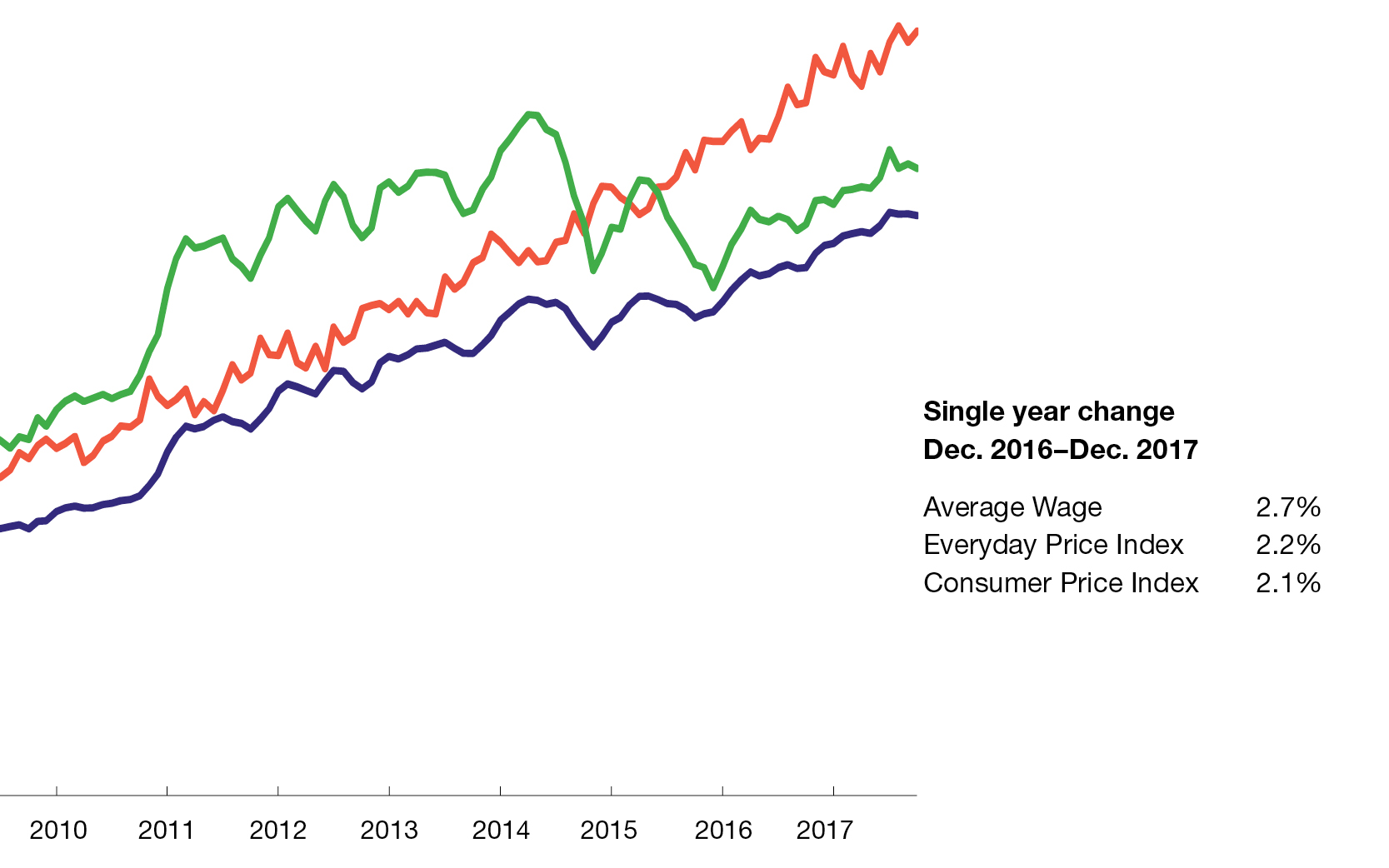The Never-Ending Woes of State Enterprise
History is something you can try to escape, but sometimes you can’t, as millions of train riders find out every day.
They can’t escape Penn Station falling apart along with Amtrak, New York City commuter railroads, and the New York City subways. Every day they are reminded of the sordid history of government enterprise with derailments, delays, and the billions of dollars of red ink of these dysfunctional systems. The bill is handed to the taxpayers whether they ride these trains or not.
But most analyses and criticisms of government ownership and management of the subways and railroads are hopeless.
The lost range from the Goo-Goo groups of the 1930s who called for public subway ownership, to their scions, the Straphangers Campaign of today, to the supposedly laissez-faire Manhattan Institute. All reject a discussion of privatization. That’s because they work from the proposition that Albany and Washington, owing to their ability to tax and spend, are omnipotent and should continue to run transit systems — that they are part of the solution.
All these groups assume that no degree of private management can be allowed on the rails because it will always fail.
Yet private management was there at the beginning. Private railroads helped build the economy of the United States in the 19th and 20th centuries. And private management was essential when the first subways were built.
The City to the Rescue?
Private companies built the first subway lines in 1904 under a contract with the city. They were considered “an engineering marvel,” wrote Robert Caro in his biography of the New York uber-builder and power broker Robert Moses (“The Power Broker”). And the subways made money in their first 15 years of operation until the inflation of World War I squeezed the value out of the nickel fare. Repeated attempts to raise the fare in the 1920s and 1930 were rejected by politicians as the actions of greedy owners.
However, the city took control of the subways in 1940. The ousting of the private companies and the triumph of government enterprise supposedly heralded a new, brighter period. The sacred nickel fare would be protected. Labor unions would be happy and wouldn’t strike. New lines would be built. (All these promises of 1940, we will see, were broken as government operation of the lines began).
What happened in 1940 had a significance that has redounded throughout the American economy. Governments increasingly moved into areas that no one could have imagined generations ago.
One journalist understood what was happening when private companies were forced out of the subways.
An Enlightened Critic Ignored
“The City of New York has set a pattern for the nationalizing of the railroads of the country.” Libertarian journalist Frank Chodorov, in reviewing the events of 1940, said that “a regulatory body, with power to fix rates and compel unprofitable operation, squeezes the business into bankruptcy, so that the owners are quite willing to sell their property to the taxpayers, and bureaucracy improves its position.”
Chodorov’s analysis would apply again in the 1970s under President Richard Nixon, when a group of passenger railroads were pushed into bankruptcy by the over-regulation of the Interstate Commerce Commission, as detailed in the book “No Way to Run a Railroad: The Untold Story of the Penn Central Crisis,” by Stephen Salisbury.
This kind of backdoor socialism — a dream of progressives to take over transportation companies through over-regulation — goes back to William Jennings Bryan, who favored nationalization of the railroads after visiting Czarist Russia, and Herbert Croly. Wrote Croly in “The Promise of American Life” in 1909, when the idea of government railroads and transit systems seemed ridiculous, “The railroads might submit to the operation of some gradual system of appropriation, which would operate only in the course of several generations, and the money for which could be obtained by the taxation of railroad earnings.”
By 1971, the Croly plan had been enacted. Americans got a national passenger railroad system called Amtrak. Amtrak officials then promised “the greatest turnaround in business history,” as detailed in the book “End of the Line” by Joseph Vranich. That hasn’t happened, as anyone who uses Penn Station these days will tell you. Amtrak ran in the red from day one (and it lost at least $13 billion between 1972 and 1997, according to author Stephen Moore). In fact, all the lines using Penn Station, including New Jersey Transit, the Long Island Railroad and the city subways, are deep in the red.
Let us return to the promises of a supposed golden era of the New York City subways that started just before World War II.
The Broken Promises of Forgotten Leaders
Mayor LaGuardia drove the first city train after the last private company was bought out. He promised a Second Avenue subway line as the city’s East Side el lines were ended. The subway promises of 1940 were a joke in every way—from the fare to the quality of service to the promises of line extensions. Under city mismanagement, the subways became a mess. It took three bond issues over more than half a century even to get just a few stops of the Second Avenue going. Unions would illegally strike several times and cripple the city’s economy.
And soon after the city took control of the subways in 1940, ousting the last private companies, fares have gone up and up. Today the basic fare is $2.75.The city yielded control over the subways in 1968 to a state authority.
Now, after almost 50 years of Albany control, after countless bond issues and deficits in a system that is an effective monopoly, the system, by all accounts, is a disaster.
The state authority running the subways, the Metropolitan Transportation Authority, is deeply in the red. Vital repairs and improvements can’t be made because the subway system loses tons of money. Yet the MTA spends billions of dollars recklessly and has its headquarters in the most expensive part of town.
New York City Mayor Bill de Blasio now offers to solve the MTA’s problems. The mayor says the city should take over the subways from the state authority. Apparently, he has forgotten that the city under LaGuardia once owned the subways.
Subhead: Feeding the State Enterprise Beast
You don’t solve the problem of government enterprise by giving the enterprise — whether it be the New York City Subways or Amtrak — more money and more power. For instance, Senator Chuck Schumer proposes that Amtrak now be given trillions of dollars in new funding. Many city officials propose the same for the subways. The governor now proposes to give the MTA another billion dollars. Given the decades of delayed maintenance in the system, that number seems inconsequential. Taxpayers who approve of this flawed system of state enterprise should be prepared to pay much more than an additional $1 billion.
That’s because this funding of incompetence has been tried and has failed many times before. Proposed emergency plans, all providing for more taxpayer geld and new forms of state or city authorities, abound.
Writes one historian of the subway system, “If anything has emerged as a timeless and universal characterization of the New York Subway, it is the endless search for some future salvation, some not yet realized resolution of it difficulties and cure for its ills. Plans are made, programs developed, goals established. But they never quite live up to their initial expectations, and a new cycle must begin.”
The writer was Brian Cudahy, and yet he is a former federal transit official and longtime defender of this flawed system of public subways.
Collectivism and Coercion
Not only do the subways and Amtrak, being collectivist, fail to deliver the goods. They are undemocratic. No elected official is directly in charge of these enterprises. The New York governor, for instance, appoints some but by no means all members of the state authority that runs the subways.
This collectivism combined with a lack of accountability in running state enterprises is dangerous. Once politicians were accountable for these public transportation systems. However, for generations now, elected officials, aware of how much many riders hate these trains, have handed over the operation of these egregious systems to government commissions or authorities.
“If anything has been demonstrated by modern experience in these matters,” F.A. Hayek wrote in 1960, “it is that, once wide coercive powers are given to government agencies for particular purposes, such powers cannot be effectively controlled by democratic assemblies.”
It is time to learn from history and let private enterprises get New York’s transit systems back on track.





